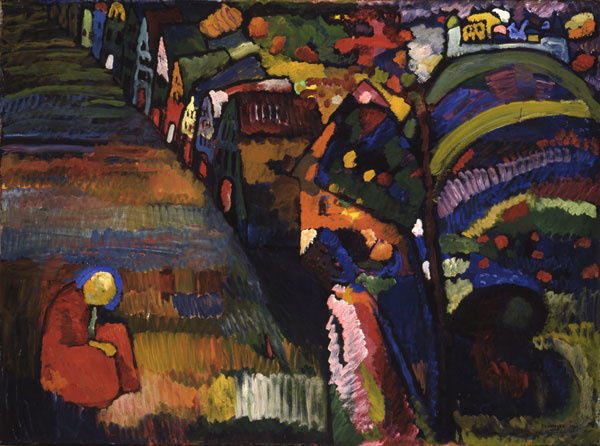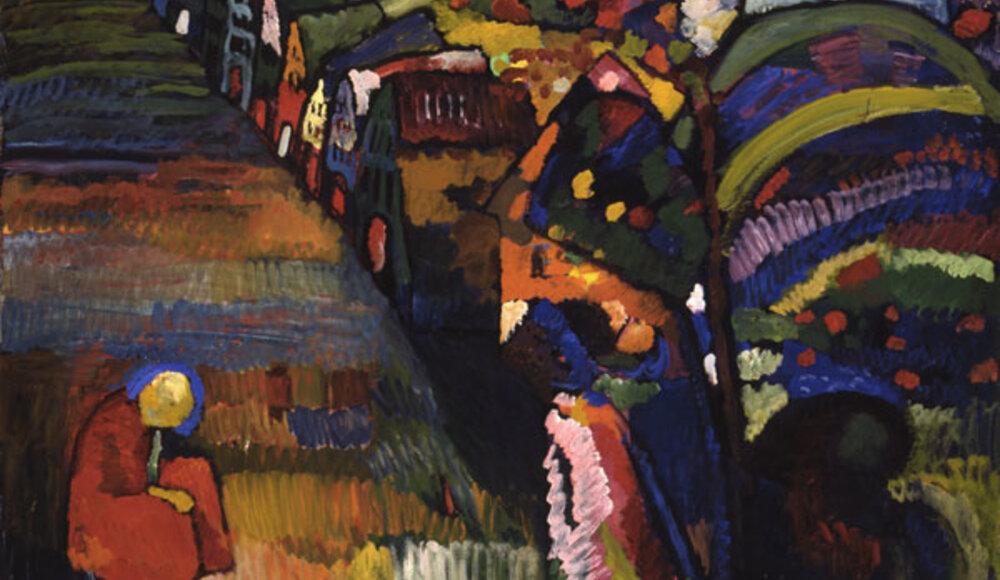
Bild mit Hausern by Wassily Kandinsky
Amsterdam has announced that it will return the 1909 painting of Wassily Kandinsky, which hangs in the Stedelijk Museum, to the heirs and descendants of Emanuel Lewenstein (a Jewish sewing-machine trader). This is the end of a long-running dispute. The decision, announced 28 August, reverses the city's earlier position following a 2018 recommendation by the Dutch Restitutions Committee to reject the heirs' claim. This decision also contradicts a 2018 court ruling that upheld the much-criticized committee's decision. This long-running case led to criticisms of the Dutch government's policies regarding Nazi-looted art.
"We have a rich history as a city, and that brings with it a great responsibility to deal with the injustices and irreparable suffering inflicted upon the Jewish population during World War II," Femke Halsema, the mayor, and Touria Meliani (the deputy mayor responsible for arts, culture and the environment), said in a joint statement. "The city supports a fair and transparent restitution policy that returns as much stolen art to its rightful owners or heirs as possible."
The decision, together with recent reforms by the Restitutions Committee may help to revive trust in Dutch policy regarding Nazi-looted artwork. Representatives for two major claimants warned in 2018 that the country's handling claims on works in museums could make it "a pariah", as the "smallest and chilling distinctions" are made to allow museums to preserve their collections.
Kandinsky's Paint With Houses was probably sold by Robert Lewenstein or his wife in October 1940. Robert Lewenstein fled Nazi Germany in 1940 and emigrated to France in1939. The Restitutions Committee found that the sale of the painting, despite it being sold by German troops after the occupation of the Netherlands, could not be considered a sale due to Nazi persecution.
Anne Webber, of the Commission for Looted Art in Europe, and Wesley Fisher, of the Jewish Claims Conference, discussed the Lewenstein case in a December 2018 newspaper article. They cited the flawed Dutch policy as the reason for the recommendation.
The committee was criticized for not weighing the interests of a museum to keep a work of art against the claimant’s interest in recovering it. The panel was also criticized for creating "a hierarchy of losses" in which seizure or confiscation is higher than forced sales.
These negative comments led the Dutch government, which is a former politician, to request a review of the Restitutions Committee policy by an independent panel. The late-2013 review called for a policy that is more humane, transparent, and of goodwill.
Kohnstamm's Report urged the Restitutions Committee not to continue the controversial "balance-of-interest" policy that was crucial to its decision in the Lewenstein case. It also stated that "involuntary dispossession" will be presumed if dispossession took place in the Netherlands within 10 May 1940, as was the case for Kandinsky.
Amsterdam's mayor stated that she did not see the need to refer the Kandinsky dispute back to the Restitutions Committee to get a new decision. The committee, according to its new guidelines would likely recommend the painting's return.
The statement stated that the College of Mayor and Alderpersons had begun consultations with the heirs in order to reach a settlement agreement. After which, the artwork Bild mit Hausern by Wassily Kandinsky can be immediately returned to its rightful owners."
More infotmation on Stedelij Museum Amsterdam


 Jean Dubreil
Jean Dubreil